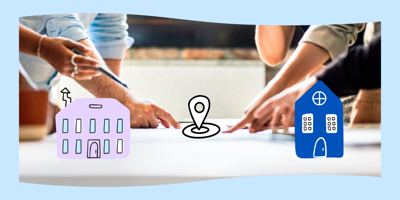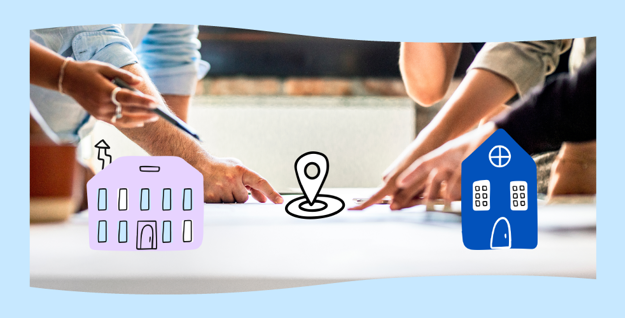We’ve been working with Hackney Council and MadeTech, collaboratively redesigning their Benefits and Housing Needs service with the aims to:
- reduce friction between staff and existing IT systems
- better manage demand on the service
- make the service more efficient and effective
- focus on preventing homelessness in the system
Working together, we’re designing and building a service that we’re proud of and confident in delivering. A service which is easily understood, fair, accessible and beneficial to deliver the best outcomes for residents.
What have we done so far?
Over the past year, we’ve done a lot of work to build off previous understanding and fill in gaps of knowledge, both at a service level and the technology that enables it. This allowed us to create and identify opportunities that will support the service and improve the way residents find sustainable housing solutions in Hackney.
We supported the service to define a vision that we could all look towards and that would help prioritise areas for improvement. This vision focuses on prevention and relieving demand so we can achieve the best outcomes for Hackney’s most vulnerable residents.

As our list of opportunities grew, the service and vision led us in the right direction helping us choose which ideas to develop and test our assumptions. The experiments and prototypes that followed took many forms, but it was clear where we needed to focus on making the vision a reality.
So, where are we now?
We’re making sure we deliver the right thing to help staff by running alphas, prototypes and experiments (shout out to continuous delivery):
Single view of a customer (scaling to Beta)
What it says, is what it does. Staff currently have to go through multiple legacy systems to gather a whole picture. This can mean sometimes taking 20-30 minutes to complete a task or simple information gathering. What if you could just use one platform? A single view, helping to save time searching by 10–25 minutes.
Information and evidence (Alpha being tested)
How can we better manage expectations and help staff with difficult conversations? Using pre existing data and some tight design work, we’ve developed a tool that gives accurate wait times for social housing. This tool also helps signpost residents to other, faster housing solutions.
Check in and nudge (experimental prototype)
The team is exploring how to better support residents through collaboration and better communication with an SMS tool.
Understanding vulnerability (experiments and prototypes)
We’re exploring the use of digital tools throughout the resident’s journey, to capture the right information at the right point. This will help Hackney understand a resident’s level of vulnerability when approaching any part of the service and determine the level of service that an individual receives.
Improving the shared plan
With the introduction of the Homelessness Reduction Act in 2017, all councils had to implement Shared Housing Plans. We’re exploring how we use this opportunity to make sure we’re creating the best plan to help demand on staff, but also deliver the best outcome for the client.

Digital tools empowering residents to care for at-risk children
Creating a groundbreaking suite of new digital tools to support caregivers of at-risk children, provide guidance and drive applications.
Read moreOur recent insights

Designing and developing FamilyStory
Focusing first on child protection, FamilyStory is transforming the way local authorities approach technology for children’s social care.
Read more
8 lenses for service transformation
By thinking about the specific parts of a system or service, and how they relate to one another, we can begin to understand the interactions between them and identify opportunities for change.
Read more
Building a better Family Information Service
Throughout our lives, people need to find information in their local area on everything from childcare to support services. This need is usually met through confusing online directories with inaccurate, or even incomplete, data. Many of which don’t help residents in their search for information.
Read more

